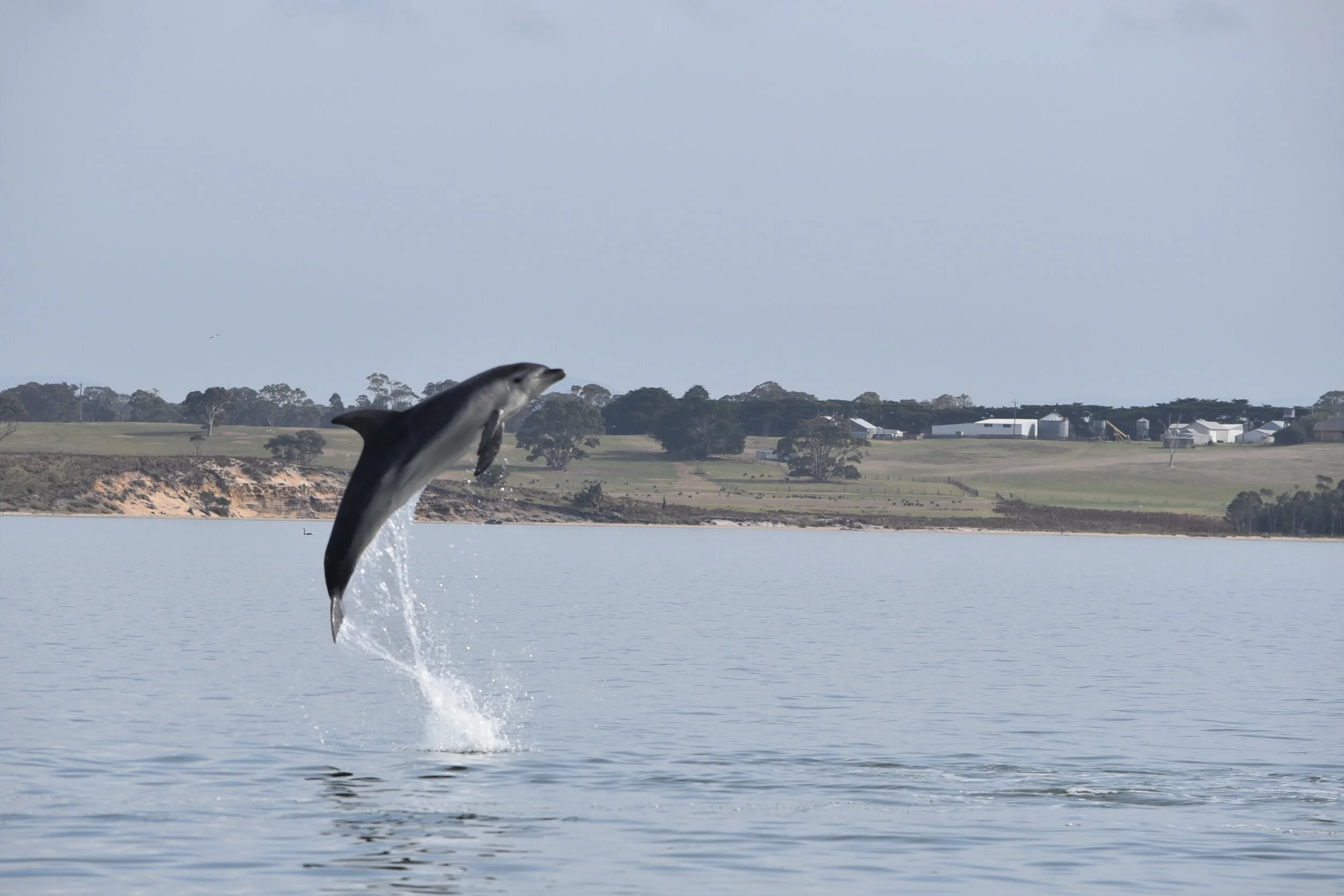
Log a Sighting
TrakMM is a MMF initiative that allows the community using the waterways to log sightings of marine mammals
We acknowledge that our researchers cannot be on the water all the time so with the community’s help in logging sightings, researchers can formally record those sightings and assess areas of significance for marine mammals.
Log your sighting below or if you’re on socials you can join our Facebook Group Dolphin & Whale Spotting Victoria page to report sightings for the whole community to enjoy!
If you need help with identifying the animals you’ve spotted, check out the gallery at the bottom of this page for marine mammal species that are commonly found in Victorian waters, or see the ‘Marine Mammals’ tab for more detailed descriptions.
Please note that marine mammals are protected and specific approach distances are in place to ensure our marine mammals’ (and your own) safety. See MMF’s Conservation page for specific regulations.
At this time, we are not able to accept images through our web platform, but if you have images you would like to submit for research purposes, please send them through to sightings@marinemammal.org.au with your name and sighting details.
In Victoria, if you see a sick or deceased dolphin please report it immediately to the Whale and Dolphin Emergency Hotline on 1300 136 017.
Enter your sightings here:

Burrunan dolphin: Up to 2.5m. They are characterised by a falcate (curved) dorsal fin, short rostrum (nose), and a distinct tri-colouration pattern, with dark grey on the upper side of the body, a paler grey midline and cream underside. The cream underside can extend over the eye, whilst the grey mid-line forms shoulder blaze (a brush-stroke pattern).
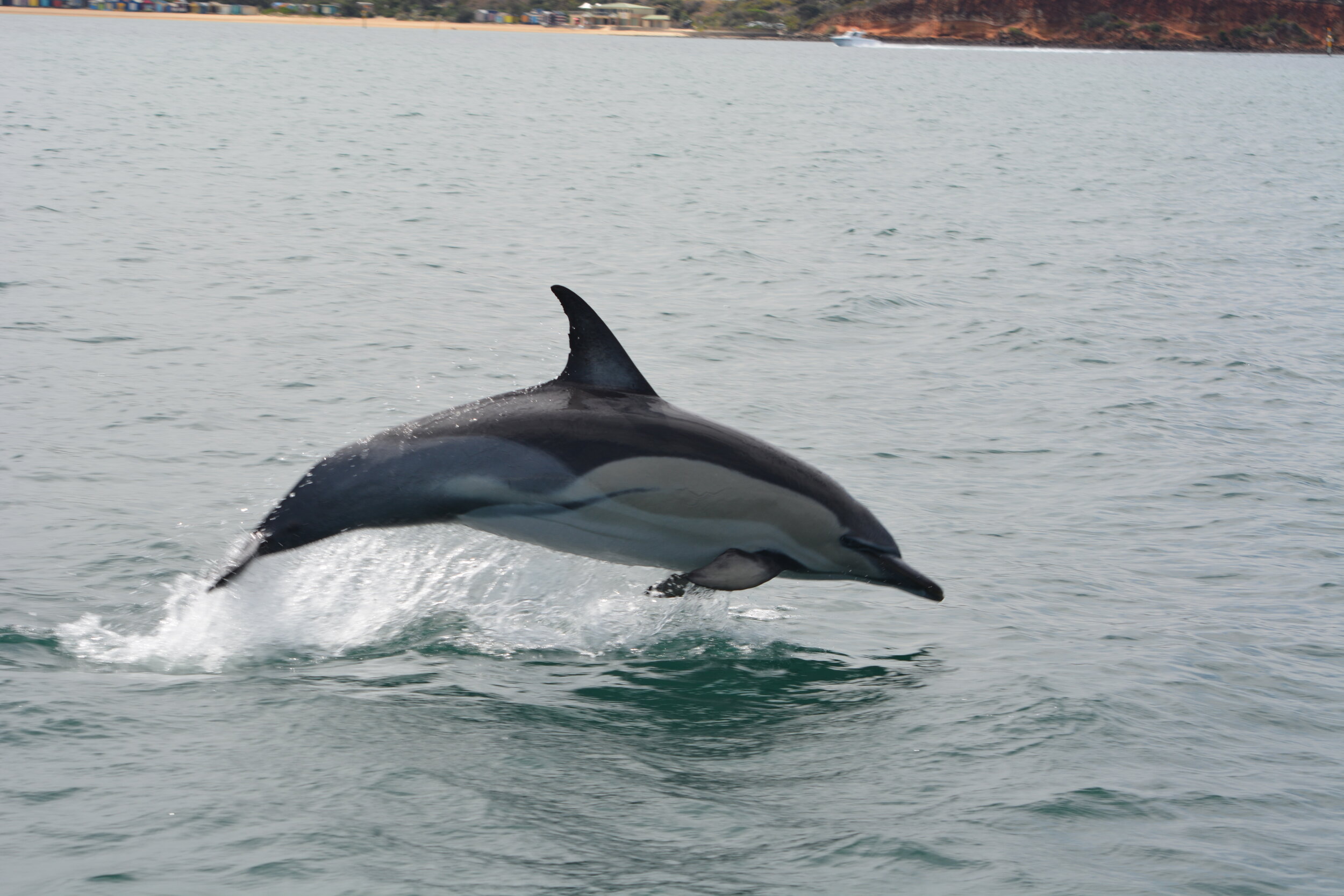
Short-beaked common dolphin: Grow up to 1.5-2m and have a tri-coloration pattern with a distinct gold/cream/tan patch on their side. Their upper body is dark grey with a white underside, and they also have a distinct dark stripe extending from the rostrum (nose) to the pectoral fin. They have a long slender rostrum, a deep crease between the head and beak, and a triangular dorsal fin with paler inner coloration.
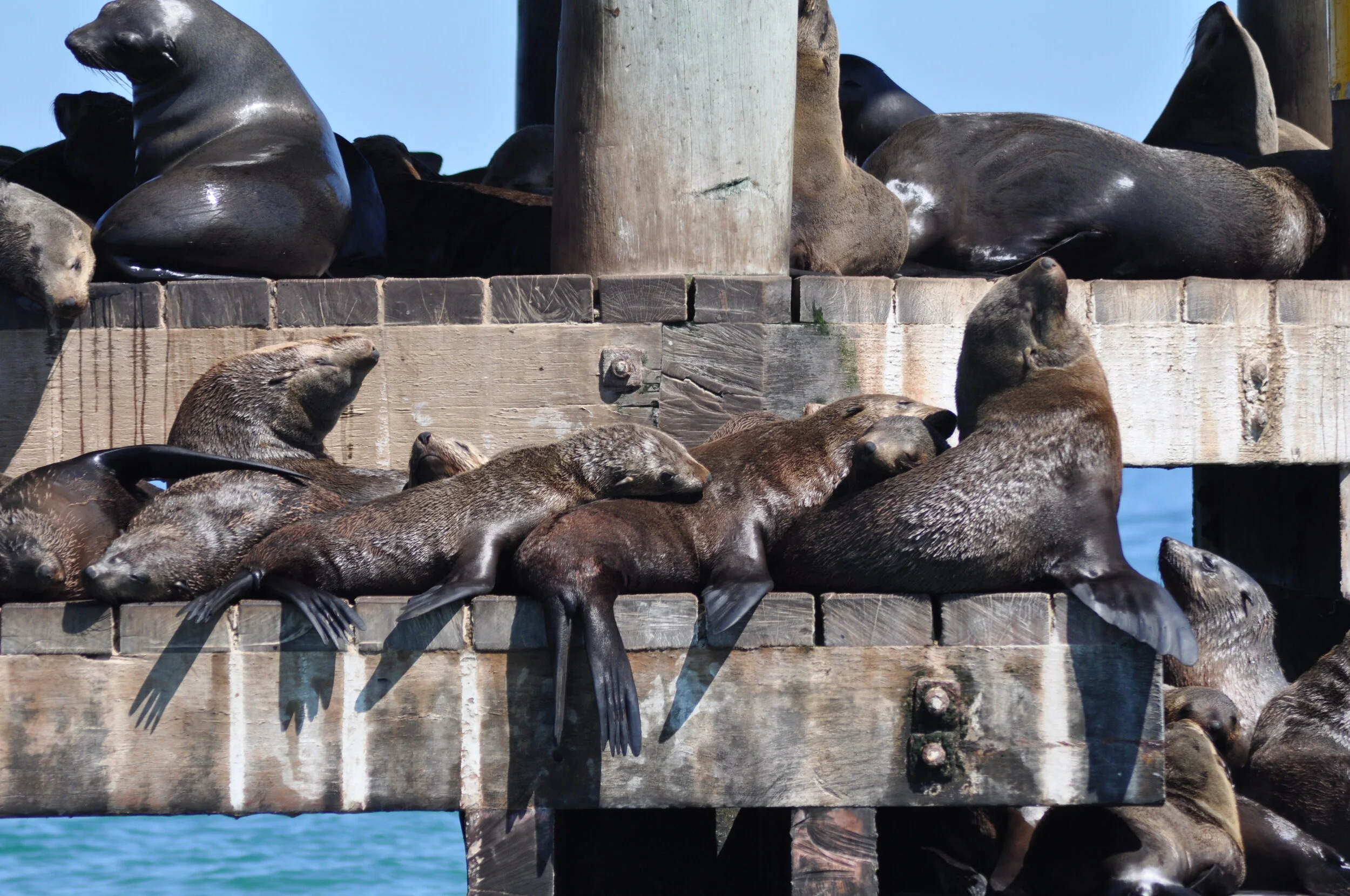
Australian fur seal: Males (bulls) can grow up to 2.5m long, and vary from a dark grey-black to grayish-brown. They are ‘heavy chested’ with a thick mane and have a large bulbous head and muzzle (nose) when mature. Adult females (Cows) are much smaller and only grow up to 1.8m long, and are pale fawn to light greyish-brown with a distinct pale chest. They have visible ears and long whiskers, and are able to walk on land using all four flippers.

Long-nosed fur seal: Smaller than the Australian fur seal, with males (bulls) reaching 1.8m in length and females (cows) reaching 1.4m. They have a dark upper body and a lighter underside, and a pointed snout, long pale whiskers, and dark tan ears. Males are much larger than females, and when mature have a dark, coarse mane, and a large bulbous head and muzzle. In some individuals, their top layer of fur can have white tips which give them a silvery appearance.
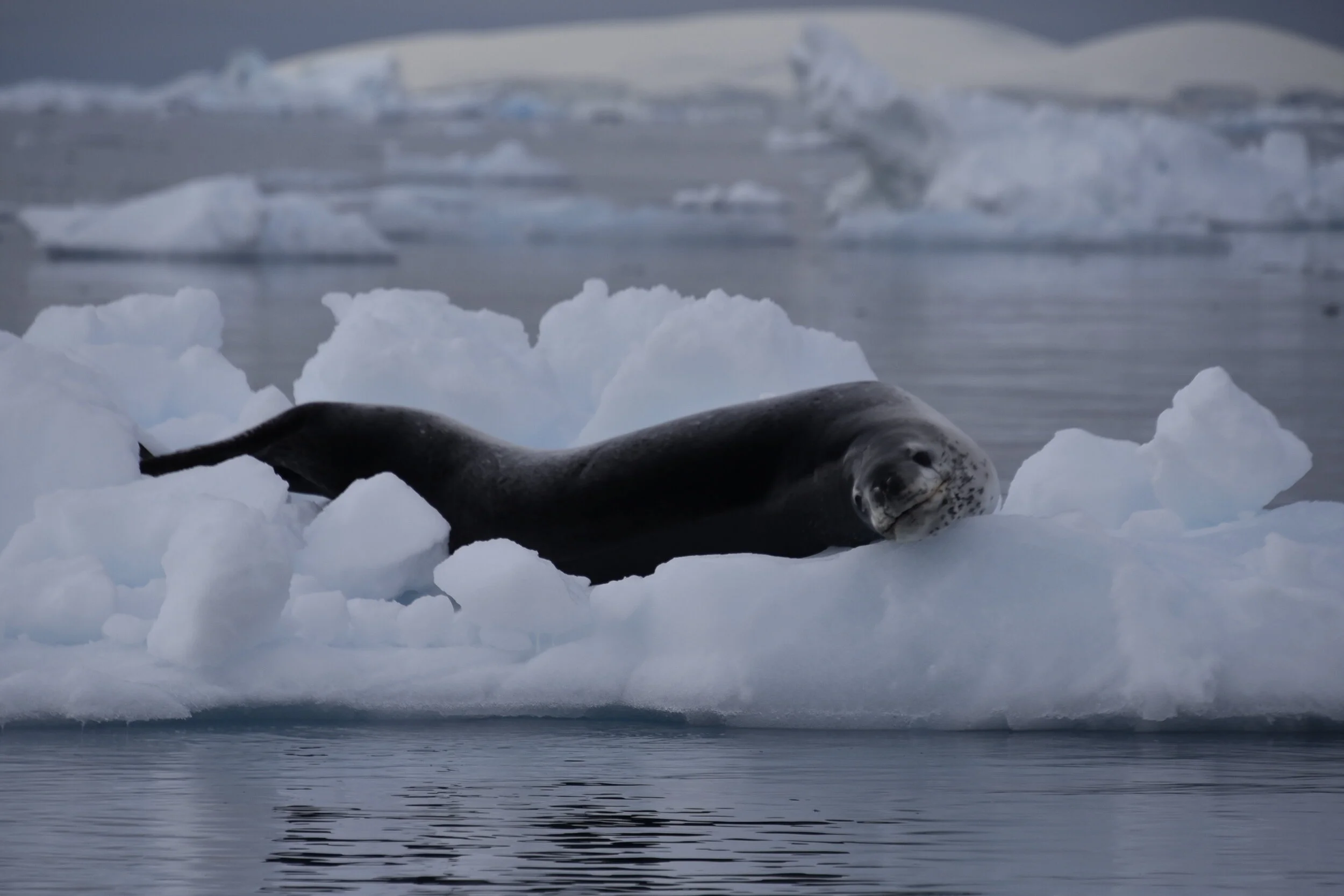
Leopard seal: Can grow up to 3.8m long. The leopard seal is characterised by its sleek, muscular body, elongated head and square muzzle, and distinctive coat pattern; with a dark grey back and a leopard spot-patterning on their bellies. They also lack external ear flaps.
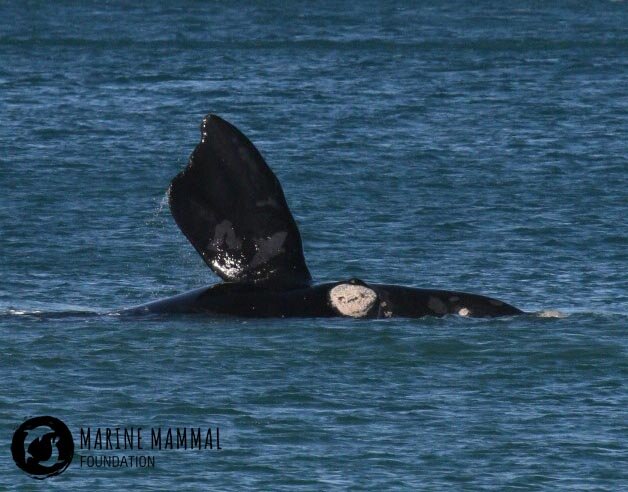
Southern right whale: Can grow up to 16-18m long. They have a large bulbous head, robust dark body with white patches on their bellies, downward arched mouth line, paddle-like pectoral fins, and no dorsal fins on their backs. They also have distinctive white rough markings around the head region known as callosities. The blow of a Southern right whale is an often-asymmetrical V-shape and can be 5m high.

Humpback whale: Can grow up to 14-18m, and are known for their long, knobbly pectoral fins, acrobatic displays, and distinctive throat pleats. They have a grey to black colouration on their back, and white undersides. Humpback whales also have a small bushy blow which can reach 3m in height.
